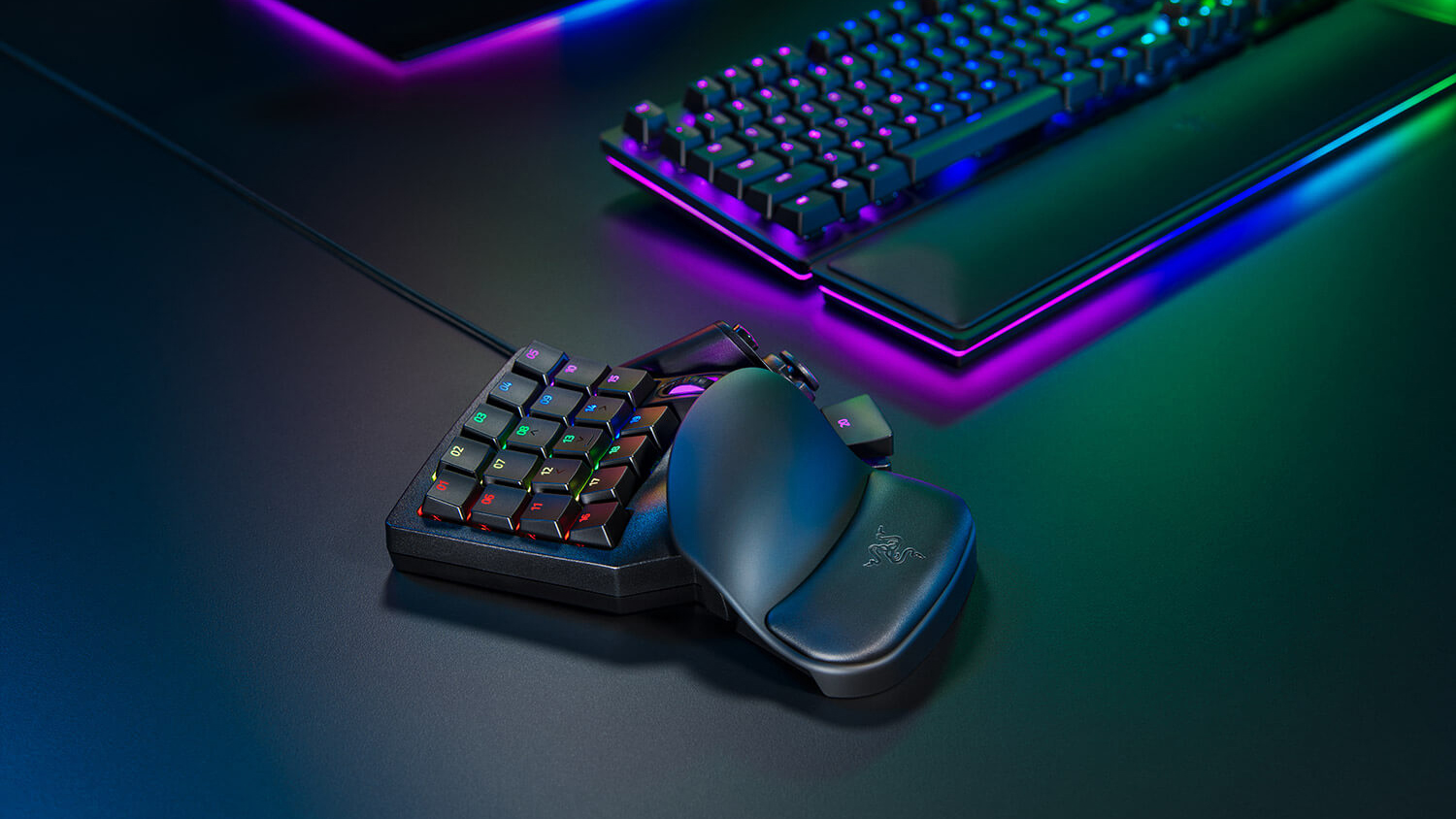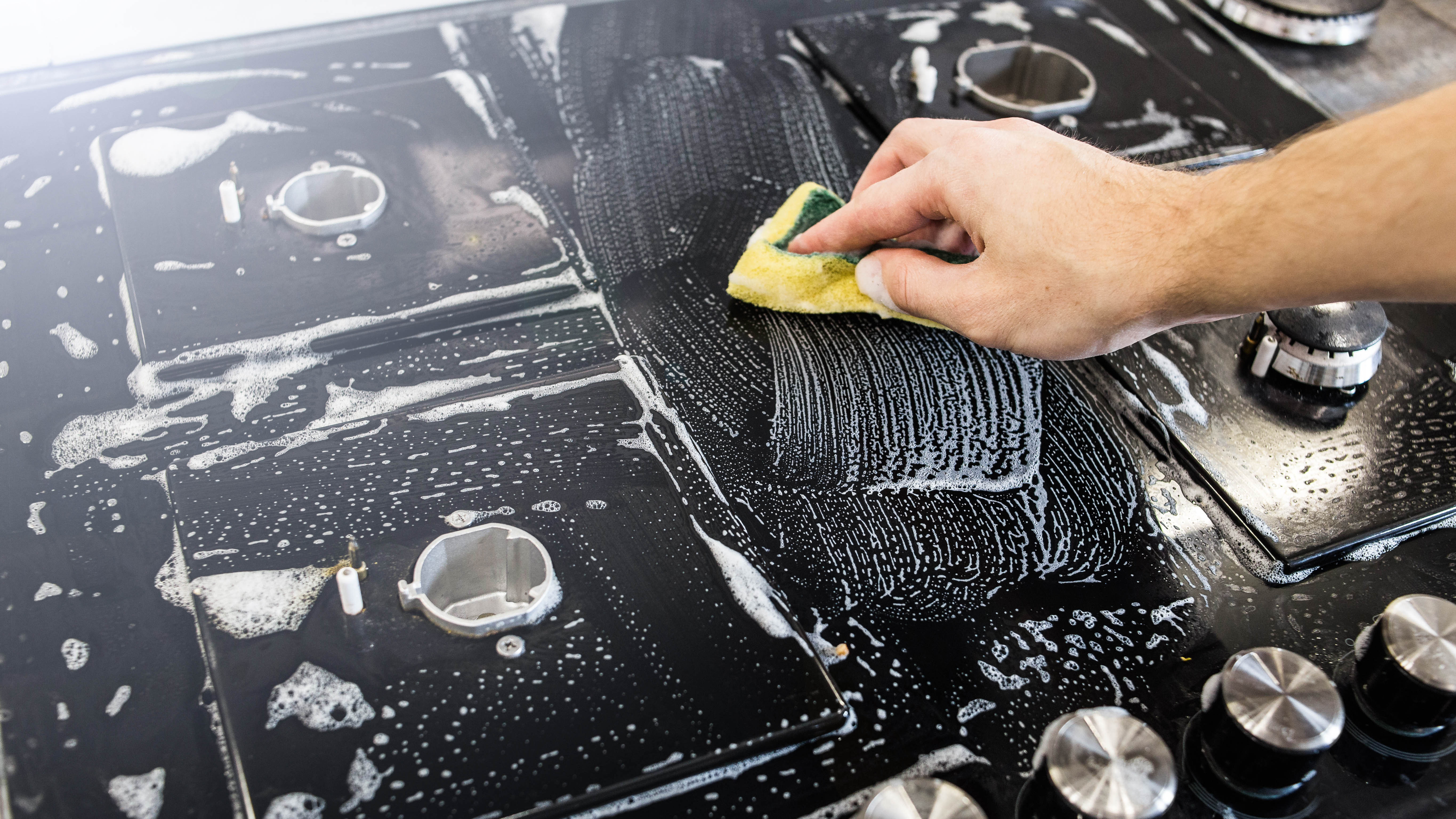Tom's Guide Verdict
The Razer Tartarus Pro keypad makes some games marginally easier to play, but it's pretty expensive, and its audience is very niche.
Pros
- +
Inventive analog optical-key switches
- +
Robust software
- +
Beneficial for high-level MMO play
Cons
- -
Expensive
- -
Not that comfortable
- -
Few benefits over a good keyboard
Why you can trust Tom's Guide
When I reviewed the Razer Tartarus V2 Chroma keypad a few years back, I wasn't exactly sure who would need one. Gaming keypads are a luxury item, sure, but they're also a bit niche. Do you really need a tiny keyboard right next to your regular keyboard? Will having one make your massively multiplayer online games tangibly better?
Razer seems to think so: It has released the Razer Tartarus Pro ($130), an upgraded version of the Tartarus V2 Chroma that features some very impressive analog optical keys. The Razer Tartarus Pro takes up very little desk space but offers some of the best features of both a controller and a full-size keyboard.
Even taking those advantages into account, however, it's tough to recommend the Razer Tartarus Pro instead of a decent controller or full-size keyboard. While the keypad is fairly well-designed, the benefits you get are mild, and you're going to dish out a lot of money for them. The Razer Tartarus Pro makes some games marginally easier to play; it makes other games much harder.
While reviewing the Razer Tartarus Pro, I read a lot of testimonials from MMO gamers who swear by gaming keypads, and I have no intention of dismissing their experiences. If you think you could get a lot of use out of a gaming keypad, the Razer Tartarus Pro is worth considering. But if you're not already sold on the concept, you'll have to overcome a high price and a steep learning curve.
Design
In case you've never used a gaming keypad, they're interesting little devices. Rather than a full-size keyboard, you get about 20 keys placed on a mitten-shaped chassis with a wrist rest, an analog stick and a few other buttons.
From a design standpoint, the Razer Tartarus Pro is extremely similar to the Tartarus V2 Chroma. There are still four rows of numbered buttons (19 altogether), a scroll wheel, a button to switch profiles, an "analog" stick (we'll get back to this), a thumb button, a hard palm rest and a soft wrist rest. Imagine a keyboard/mouse hybrid crafted with a one-handed player in mind, and you'd probably come up with something similar.

The problem with the Razer Tartarus Pro is that it's a little hard to reach everything, and the inflexible palm rest creates some friction when you need to move your hand around. If you lay your palm on the palm rest and your wrist on the wrist rest, as Razer intended, you can access the middle two rows of buttons pretty easily, but you'll have to stretch a bit for the top row, or contract your hand for the bottom row.
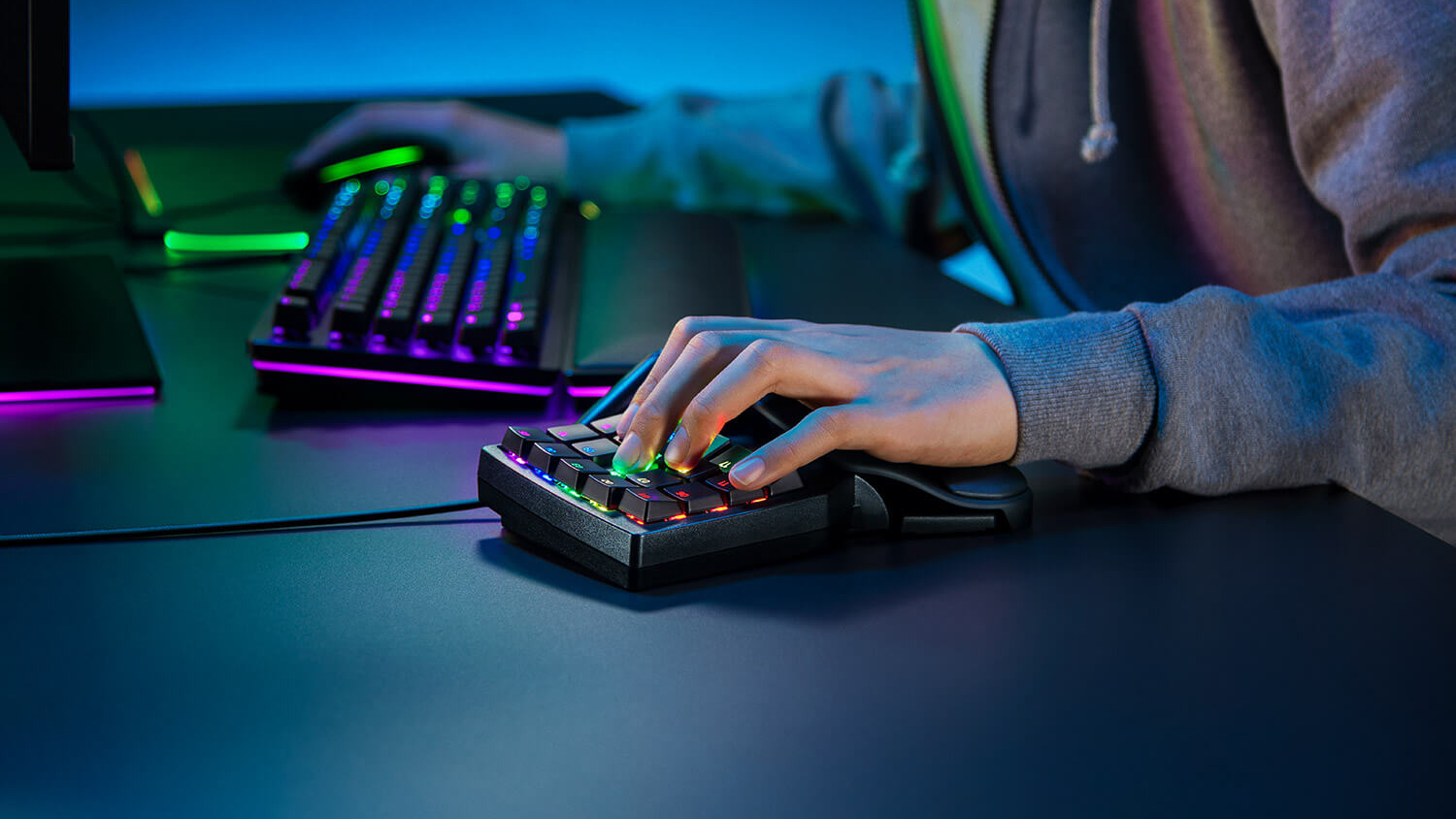
Since you need your thumb for both the analog stick and the thumb button (which, by default, is assigned to a Spacebar command), it's nearly impossible to use the top row and the analog stick at the same time.
This is less of a problem if you just need a few rows of buttons and can rest your fingers in the center row, like with the ASDF keys on a keyboard. Even then, it was a lot more comfortable to use my regular keyboard with a wrist rest than it was to curve up the bottom part of my hand at a 30-ish degree angle.
There's also the analog stick to consider. It's technically more like a D-pad with a circular nub. You can click it in in four different directions, which makes it useful for movement.
There are also four little arrows on the 8, 12, 13 and 14 keys, mimicking the WASD keys on a keyboard, so it's up to you which method you'd prefer. I'd have preferred a more traditional analog stick, but in theory, the Razer Tartarus Pro doesn't need one, thanks to its optical analog switches.
Keys
The most interesting parts of the Razer Tartarus Pro are its analog optical keys. Rather than use one of Razer's more traditional mechanical switches (clicky Greens, silent Oranges or linear Yellows), the Tartarus uses pressure-sensitive analog optical switches. These are more like the buttons on a controller than traditional keys. Instead of a simple pressed/unpressed binary, these keys let you press them down partway and respond accordingly.
To give an easy example: If you press down the 8 key gently, your character will walk forward in most games. If you hold down the 8 key all the way, your character will run. This goes for any action that depends on the amount of pressure you exert, from firing off a single gunshot to sneaking around an enemy encampment.
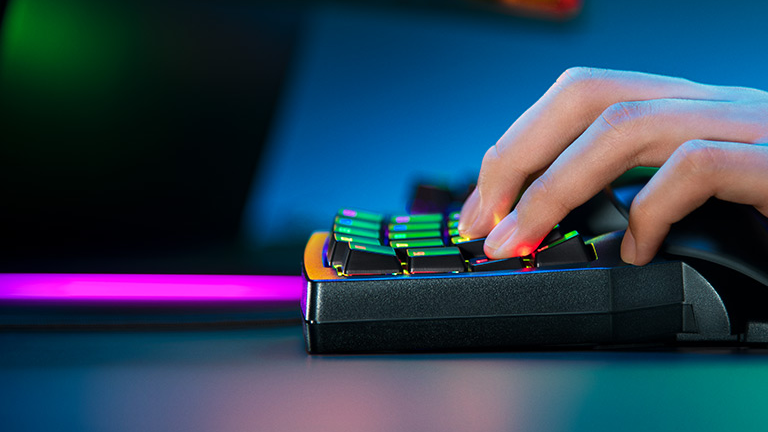
Like most Razer keys, those on the Razer Tartarus Pro are very comfortable. But I had to ask myself: Were they more comfortable than simply using a controller or a full-size keyboard?
I still don't have a solid answer. I had to stretch my hand in uncomfortable ways to reach all the buttons, and the analog optical switches — while very cool — didn't really deliver anything that a controller or a mouse couldn't do equally well.
I was definitely impressed, for example, that I could make Lara Croft walk slowly and softly in Shadow of the Tomb Raider by exerting a very gentle pressure on a keycap. But I was less impressed when I then had to sweep my hand across a whole row of keys, hunting and pecking for the one that would activate a nearby campfire, all while struggling with the analog stick to rotate the camera.
I understand that in real life, no one is going to use the Razer Tartarus Pro without a mouse, which alleviates some of these problems. But in theory, you could use it without a keyboard — in which case you'd have to very carefully program and map out every single command you need in advance.
Twenty keys is more than enough for the non-mouse commands in most games (except for real-time strategy; the Razer Tartarus Pro is really not a good accessory for that genre), but no two games have exactly the same set of commands. Furthermore, I imagine there will be a bit of a divide between players who want to rest their fingers on the second row from the top, versus players who want to rest their hands on the second row from the bottom. This means that the default 8-12-13-14 configuration for movement won't work for everyone.
Features
Like most other modern Razer gear, the Razer Tartarus Pro runs on the Razer Synapse software, which lets you reprogram the buttons, customize the RGB lighting and create profiles to link with individual games. The software does everything it's supposed to, and it's doubly helpful, as you can bind two functions to each key.
Pressing down gently will activate the first function; pressing down all the way will activate the second. It's a very cool feature, and I can't think of a keyboard that offers the same functionality. You can even customize each function's actuation point, depending on how hard you want to press each key.
As I mentioned above, it's a good thing that the software works well, because you'll need to dive deeply into it for each new game you play. While you can switch easily among "keypad," "joystick" and "controller" configurations, you can come up with much more convenient profiles on your own. Even among controller-optimized games, there are still big differences regarding button priority.
Performance
To give credit where it's due, I was very impressed with the analog optical switches and enjoyed the ability to program two commands per button. But once I got past the novelty of this tiny keyboard acting like a more elaborate controller, I didn't find it particularly useful for moment-to-moment gameplay.
The Tartarus Pro and other gaming keypads are mostly accessories for MMOs, and it was indeed a pretty good companion for my time spent in Final Fantasy XIV. While a full keyboard gives you access to a variety of shortcuts, all you really need to excel in the game is a mouse, your movement keys and a row of number buttons to activate skills. Cutting out the rest of the keyboard let me focus just on combat, and the analog stick was a cool way to adjust my visuals on the fly.
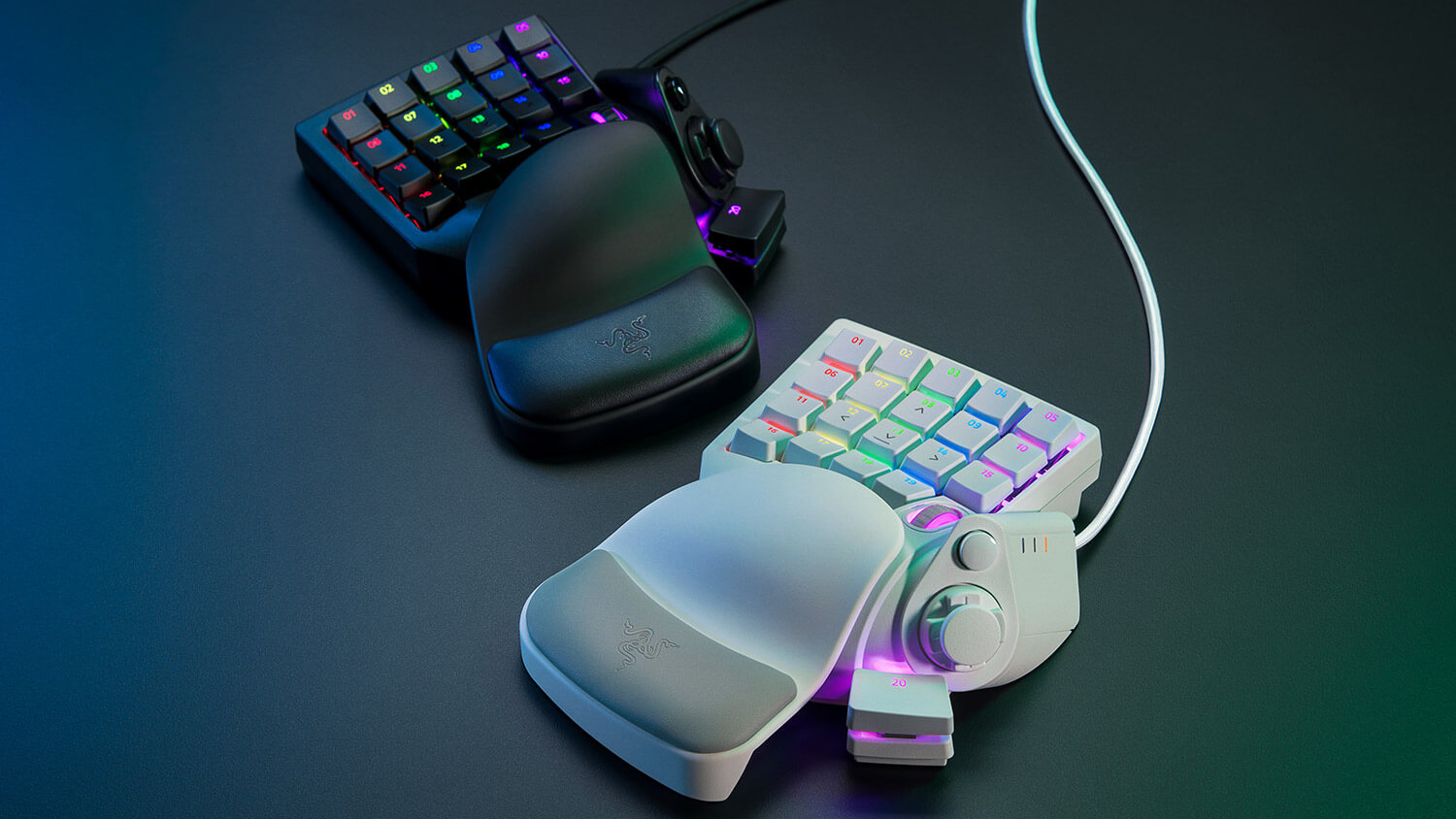
On the other hand, the Tartarus Pro didn't eliminate the need for a keyboard, either. I still needed a full suite of keys to type in-game messages as well as access the game's myriad menus.
I'm also not sure the keypad was any more convenient than a keyboard. I had access to movement and combat controls, true, but I had access to the same things on the left half of a keyboard. The Tartarus has the more ergonomic shape, but you'd have to retrain yourself to memorize the keypad's layout as intimately as you (probably) know a keyboard's.
There's also the question of how well the Tartarus Pro works for non-MMO games. I tried it with Overwatch (after reprogramming a few buttons), where I was actually very pleased with the minimalist interface. Overwatch needs only a few extra buttons to work, so the Tartarus Pro was a great addition. But even though the Tartarus has 20 buttons, I found that games where I needed more than about 10 commands got too unwieldy. For third-person action/adventure games, a controller is still the way to go; for RTS and MOBA titles, I think a keyboard is still a superior input.
Bottom line
Like the previous Tartarus model, the Tartarus Pro is very pretty, somewhat comfortable and accomplishes what it sets out to do. But it's also very niche and much more expensive than its predecessor. I can't recommend against it if you're in the market for a gaming keypad — but I don't think it's going to revolutionize most folks' gaming experience, either.
Truthfully, I don't know what the "aha" moment would be for keypad gamers, the breakthrough moment when they realize, "This peripheral could really take my gameplay to the next level."
I would imagine that for high-level MMO players who participate in a lot of endgame raids and PvP, the moment might come when they determine that a keyboard is simply too large to be efficient with just a handful of commands. For gamers like these, the Tartarus Pro is worth checking out, even though it's a pretty expensive addition to your arsenal.
For anyone else, I'd take the $130 and put it toward one of our best gaming keyboards instead. Don't forget to add a wrist rest while you're at it.
Marshall Honorof is a senior editor for Tom's Guide, overseeing the site's coverage of gaming hardware and software. He comes from a science writing background, having studied paleomammalogy, biological anthropology, and the history of science and technology. After hours, you can find him practicing taekwondo or doing deep dives on classic sci-fi.
